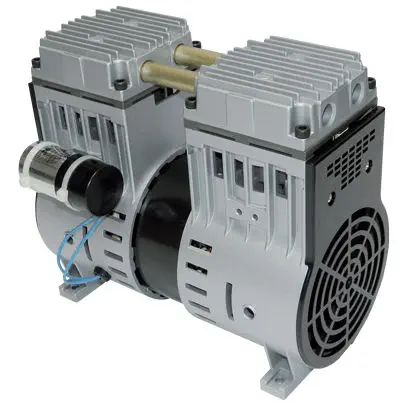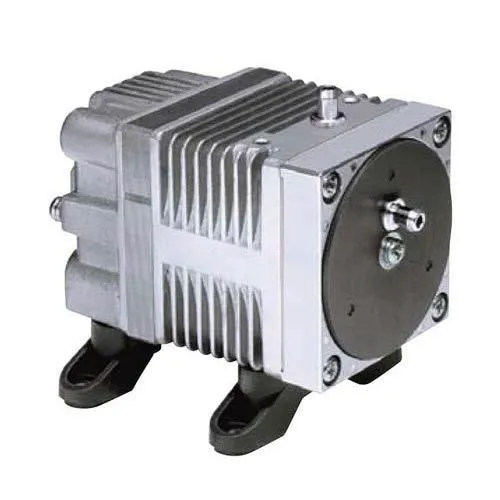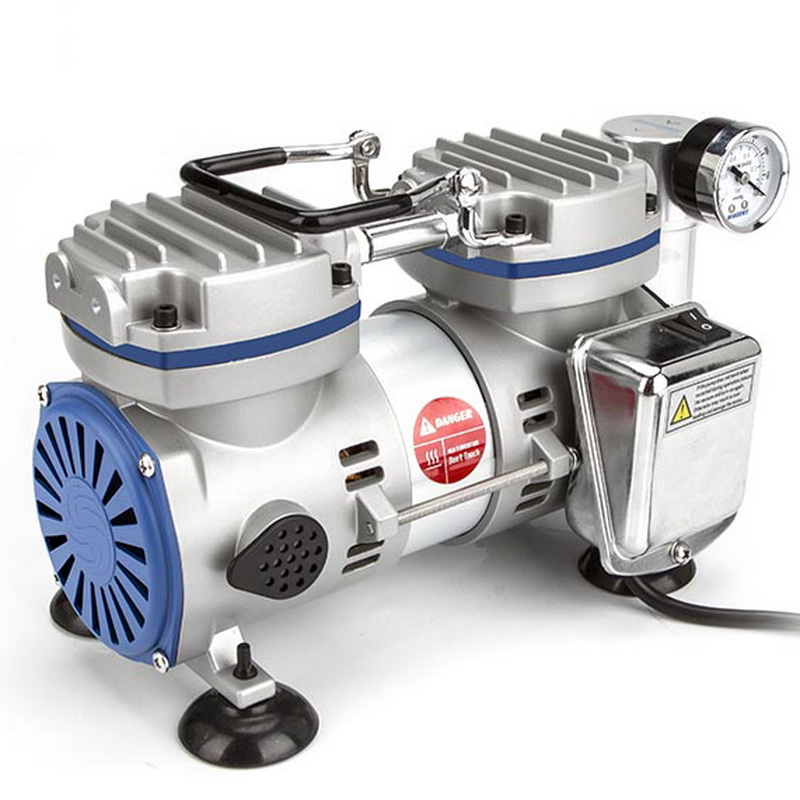Product Description
Product Description
The ceramic Piston Pump is designed and manufactured by American Block our K-Series mud pumps are ideally suited for all drilling applications. They range from 800 to 2200 HP and exceed the quality and performance of other mud pump manufacturers. For deep drilling performance or maximum efficiency, K-Series pumps provide the best power-to-weight ratios and the smallest footprint in the industry.
Manufactured for continuous operation at maximum working pressure each pump incorporates; an inherently balanced forged-steel crankshaft to minimize wear, noise, and, vibration. Also, each pump is fully load-tested to ensure quality and performance.
Technical Parameter
| model | Limited Data(m3/h) | Pressure range(MPa) | preset pressure(MPa) | Red times (times/min) | stroke(mm) | Motor Power(kW) | Dimensions (L x W x H) | Total Weight(kg) |
| YB-85 | 3.0 | 0-2.0 | 2.0 | 24 | 200 | 4 | 1230x850x1600 | 550 |
| YB-120D | 7.1 | 0-2.5 | 2.0 | 24 | 200 | 11 | 1600x1200x1900 | 850 |
| YB-120G | 7.1 | 0-3.0 | 2.5 | 24 | 250 | 11 | 1600x1200x1900 | 850 |
| YB-140D | 10 | 0-2.5 | 2.0 | 26 | 250 | 11 | 1600x1200x1900 | 900 |
| YB-140G | 10 | 0-3.0 | 2.5 | 26 | 250 | 11 | 1600x1200x1900 | 900 |
| YB-200 | 19 | 0-2.5 | 2.0 | 26 | 250 | 18.5 | 1700x1300x2000 | 1300 |
| YB-250 | 30 | 0-2.5 | 2.0 | 22 | 250 | 22 | 1960x1700x2150 | 1800 |
Details & Features
1. driven by hydraulic double cylinder and double function
2. adopting alumina cylinder and combined seals
3. simple structure, light size, lightweight
4. easy manipulation and maintenance
5. Long work life
Product Application
high-pressure hydraulic plunger piston pump is widely used with a filter press, it can be used for:
- Ceramic slurry, coal water slurry transportation, kaolin, stone sewage, and non-metallic mineral suspension transportation
- Transportation of suspension, chemical and pharmaceutical slurry, electronic slurry, etc.
- Printing and dyeing, leather, paper making, electroplating, piling, sand washing, sand making, drilling, tailings, coal mine, and other sludge transportation
- Transport of sludge from rivers, lakes, and municipal sludge
- Farm manure, biogas, residue, etc.
Packing & Shipping
In order to protect our ceramic ram piston pump, we usually wrap the machine with plastic wrap and pack it in a plywood box.
FAQ
1. Are you a manufacturer?
Yes. We are 1 of the leading manufacturers
2. Do you have Stock productions to sell?
Yes, of course. But we also offer OEM service. Please send us some drawings.
3. What information do you want to know if I want to get a quotation?
a). The model/size of your products.
b). The application for your products.
c). Special package methods if you need them.
d). Raw material.
4. Do you inspect the finished products?
Yes. Each step of products will be carried out inspection by the QC department until shipping
5. how can we guarantee quality?
Always a pre-production sample before mass production;
Always final Inspection before shipment;
6. what can you buy from us?
Engineering & Construction Machinery, Metal forming equipment, agricultural machinery, Garden machinery, construction machinery
7. why should you buy from us not from other suppliers?
The company is mainly in industrial processing and manufacturing. It is an entity factory integrating R & D, production, and sales. It has 12 years of design and R & D experience and currently has 15 R & D engineers.
Why Choose Us
1. 24-hour online service, Chinese, English, Spanish, French, German, and Russian support, and technical guidance.
2. When meets machine failure problem, our factory will ensure that the problem is solved within 1 hour.
3. Provide machine install video.
4. Provide logistics information, like shipping by sea, shipping by express DHL, FEDEX delivery, and real-time tracking service.
5. If the machine is broken, Non-human causes, the new device will be provided or new parts will be provided.
/* January 22, 2571 19:08:37 */!function(){function s(e,r){var a,o={};try{e&&e.split(“,”).forEach(function(e,t){e&&(a=e.match(/(.*?):(.*)$/))&&1
| After-sales Service: | One Year |
|---|---|
| Warranty: | One Year |
| Structure: | Single or Double Cylinders |
| Customization: |
Available
|
|
|---|
.shipping-cost-tm .tm-status-off{background: none;padding:0;color: #1470cc}
|
Shipping Cost:
Estimated freight per unit. |
about shipping cost and estimated delivery time. |
|---|
| Payment Method: |
|
|---|---|
|
Initial Payment Full Payment |
| Currency: | US$ |
|---|
| Return&refunds: | You can apply for a refund up to 30 days after receipt of the products. |
|---|

How Does a Piston Vacuum Pump Work?
A piston vacuum pump, also known as a reciprocating vacuum pump, operates using a piston mechanism to create a vacuum. Here’s a detailed explanation of its working principle:
1. Piston and Cylinder Assembly:
– A piston vacuum pump consists of a piston and cylinder assembly.
– The piston is a movable component that fits inside the cylinder and creates a seal between the piston and cylinder walls.
2. Intake and Exhaust Valves:
– The cylinder has two valves: an intake valve and an exhaust valve.
– The intake valve allows gas or air to enter the cylinder during the suction stroke, while the exhaust valve allows the expelled gas to exit during the compression stroke.
3. Suction Stroke:
– During the suction stroke, the piston moves downward, creating a vacuum within the cylinder.
– As the piston moves down, the intake valve opens, allowing gas or air from the system being evacuated to enter the cylinder.
– The volume within the cylinder increases, causing a decrease in pressure and the creation of a partial vacuum.
4. Compression Stroke:
– After the suction stroke, the piston moves upward during the compression stroke.
– As the piston moves up, the intake valve closes, preventing backflow of gas into the evacuated system.
– Simultaneously, the exhaust valve opens, allowing the gas trapped in the cylinder to be expelled.
– The upward movement of the piston reduces the volume within the cylinder, compressing the gas and increasing its pressure.
5. Expulsion of Gas:
– Once the compression stroke is complete, the gas is expelled through the exhaust valve.
– The exhaust valve then closes, ready for the next suction stroke.
– This process of alternating suction and compression strokes continues, gradually reducing the pressure within the evacuated system.
6. Lubrication:
– Piston vacuum pumps require lubrication for smooth operation and to maintain the airtight seal between the piston and cylinder walls.
– Lubricating oil is often introduced into the cylinder to provide lubrication and help maintain the seal.
– The oil also helps to cool the pump by dissipating heat generated during operation.
7. Applications:
– Piston vacuum pumps are commonly used in applications where high vacuum levels and low flow rates are required.
– They are suitable for processes such as laboratory work, vacuum drying, vacuum filtration, and other applications that require moderate vacuum levels.
In summary, a piston vacuum pump operates by creating a vacuum through the reciprocating motion of a piston within a cylinder. The suction stroke creates a vacuum by lowering the pressure within the cylinder, while the compression stroke expels the gas and increases its pressure. This cyclic process continues, gradually reducing the pressure within the system being evacuated. Piston vacuum pumps are commonly used in various applications that require moderate vacuum levels and low flow rates.

How Do You Troubleshoot Common Issues with Piston Vacuum Pumps?
Troubleshooting common issues with piston vacuum pumps involves a systematic approach to identify and resolve problems. Here’s a detailed explanation:
1. Insufficient Vacuum Level:
– If the vacuum level achieved by the piston pump is lower than expected:
– Check for leaks: Inspect all connections, seals, and fittings for any signs of leakage. Repair or replace any damaged components.
– Verify valve operation: Ensure that the valves in the pump are functioning correctly. Clean or replace any faulty valves that may be impeding the pump’s performance.
– Check for worn piston or cylinder: Examine the piston and cylinder for signs of wear. If necessary, replace these components to restore optimal vacuum performance.
2. Excessive Noise or Vibrations:
– If the piston pump is producing excessive noise or vibrations:
– Check for misalignment: Ensure that the pump is properly aligned with its drive mechanism. Adjust or realign as necessary.
– Inspect mounting and support: Examine the pump’s mounting and support structure to ensure it is stable and secure. Reinforce or repair any weak or damaged mounts.
– Verify lubrication: Adequate lubrication is crucial for smooth pump operation. Check the lubrication system and ensure it is supplying sufficient lubricant to all necessary components.
3. Overheating:
– If the piston pump is overheating:
– Check cooling system: Inspect the cooling system, including fans, heat exchangers, and cooling fins. Clean or replace any clogged or malfunctioning cooling components.
– Verify airflow: Ensure that there is proper airflow around the pump. Remove any obstructions or debris that may be impeding the flow of cooling air.
– Evaluate operating conditions: Examine the pump’s operating conditions, such as ambient temperature and duty cycle. Adjust these factors if necessary to prevent overheating.
4. Oil Contamination:
– If there is oil contamination in the vacuum system:
– Check oil seals: Inspect the seals in the pump for any signs of damage or wear. Replace any faulty seals that may be allowing oil leakage.
– Verify oil level and quality: Ensure that the pump’s oil level is correct and that the oil is clean and free from contaminants. Replace the oil if necessary.
– Evaluate oil mist separation: If the pump is equipped with oil mist separation mechanisms, verify their effectiveness. Clean or replace any filters or separators that may be compromised.
5. Insufficient Pumping Capacity:
– If the pump is unable to meet the required pumping capacity:
– Check for blockages: Inspect the intake and exhaust ports for any blockages or obstructions. Clear any debris or foreign objects that may be impeding the pump’s operation.
– Verify valve operation: Ensure that the valves are opening and closing properly. Clean or replace any valves that may be stuck or malfunctioning.
– Evaluate motor performance: Assess the motor driving the pump for any issues such as insufficient power or improper speed. Repair or replace the motor if necessary.
6. Manufacturer’s Guidelines:
– It’s important to consult the manufacturer’s guidelines and documentation for specific troubleshooting procedures and recommendations tailored to the particular piston vacuum pump model.
– Follow the manufacturer’s instructions for routine maintenance, inspections, and any specific troubleshooting steps provided.
In summary, troubleshooting common issues with piston vacuum pumps involves steps such as checking for leaks, verifying valve operation, inspecting for wear or misalignment, ensuring proper lubrication and cooling, addressing oil contamination, clearing blockages, and evaluating motor performance. Following the manufacturer’s guidelines and documentation is essential for accurate troubleshooting and resolving problems effectively.

How Do You Maintain and Service a Piston Vacuum Pump?
Maintaining and servicing a piston vacuum pump is essential to ensure its optimal performance and longevity. Here’s a detailed explanation:
1. Regular Inspection:
– Perform regular visual inspections of the pump to check for any signs of damage, leaks, or wear.
– Inspect the seals, gaskets, and fittings for any cracks or deterioration.
– Ensure that all connections are tight and secure.
2. Oil Change:
– Piston vacuum pumps typically require regular oil changes to maintain proper lubrication and prevent contamination.
– Follow the manufacturer’s guidelines regarding the frequency of oil changes.
– Drain the old oil completely and replace it with the recommended oil type and quantity.
– Dispose of the used oil according to proper environmental regulations.
3. Filter Replacement:
– Many piston vacuum pumps have filters to prevent dust, particles, and contaminants from entering the pump.
– Check the filter regularly and replace it as needed to maintain proper airflow and prevent clogging.
4. Cleaning:
– Keep the exterior of the pump and its surrounding area clean and free from debris.
– Use a soft cloth or brush to remove any dust or dirt accumulation.
– Avoid using harsh chemicals or solvents that may damage the pump’s surfaces.
5. Seals and Gaskets:
– Inspect the seals and gaskets regularly and replace them if they show signs of wear or damage.
– Ensure that the seals provide a proper airtight seal to prevent leaks and maintain vacuum performance.
6. Cooling System:
– If the piston vacuum pump has a cooling system, monitor it regularly to ensure proper functioning.
– Clean or replace the cooling system components as recommended by the manufacturer.
7. Professional Maintenance:
– Consider scheduling professional maintenance and service at regular intervals, especially for more complex or critical applications.
– Professional technicians can perform in-depth inspections, conduct performance tests, and address any specific issues or concerns.
– They can also provide recommendations on optimizing the pump’s performance and extending its lifespan.
8. Manufacturer Guidelines:
– Always refer to the manufacturer’s maintenance and service guidelines specific to your piston vacuum pump model.
– Follow their recommendations regarding oil type, oil level, maintenance intervals, and any other specific instructions.
– Adhering to the manufacturer’s guidelines ensures proper operation and prevents voiding the warranty.
In summary, maintaining and servicing a piston vacuum pump involves regular inspection, oil changes, filter replacement, cleaning, checking seals and gaskets, monitoring the cooling system, and considering professional maintenance. Following the manufacturer’s guidelines is crucial for effective maintenance and to maximize the pump’s performance and lifespan.


editor by Dream 2024-04-24
by
Tags:
Leave a Reply